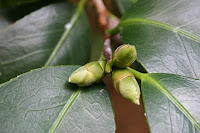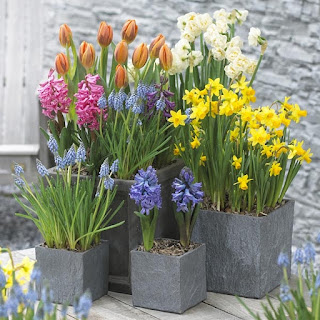
Brewing up some comfrey 'tea'
 |
| Camellia buds forming |
 |
| caged leaves image from The Modern Victory Garden |
 |
| Self-pruning tree |
 |
| "Have suitcase, will travel" |
 |
| Plant vacationing at resort |
 |
| tulips in ceramic container |
 |
| spring bulb container by Lou Paun |
 |
| spring bulb grouping in terracotta pots |
 |
| colourful spring bulb grouping |
 |
| spring bulb container from Canadian Gardening For an informative article on spring bulbs in containers, click here. |